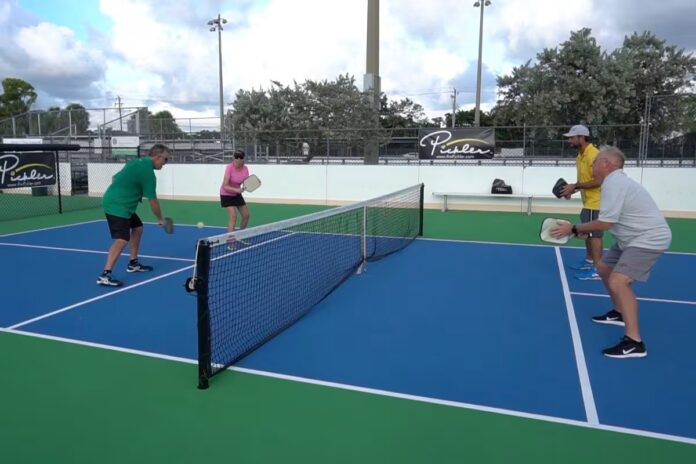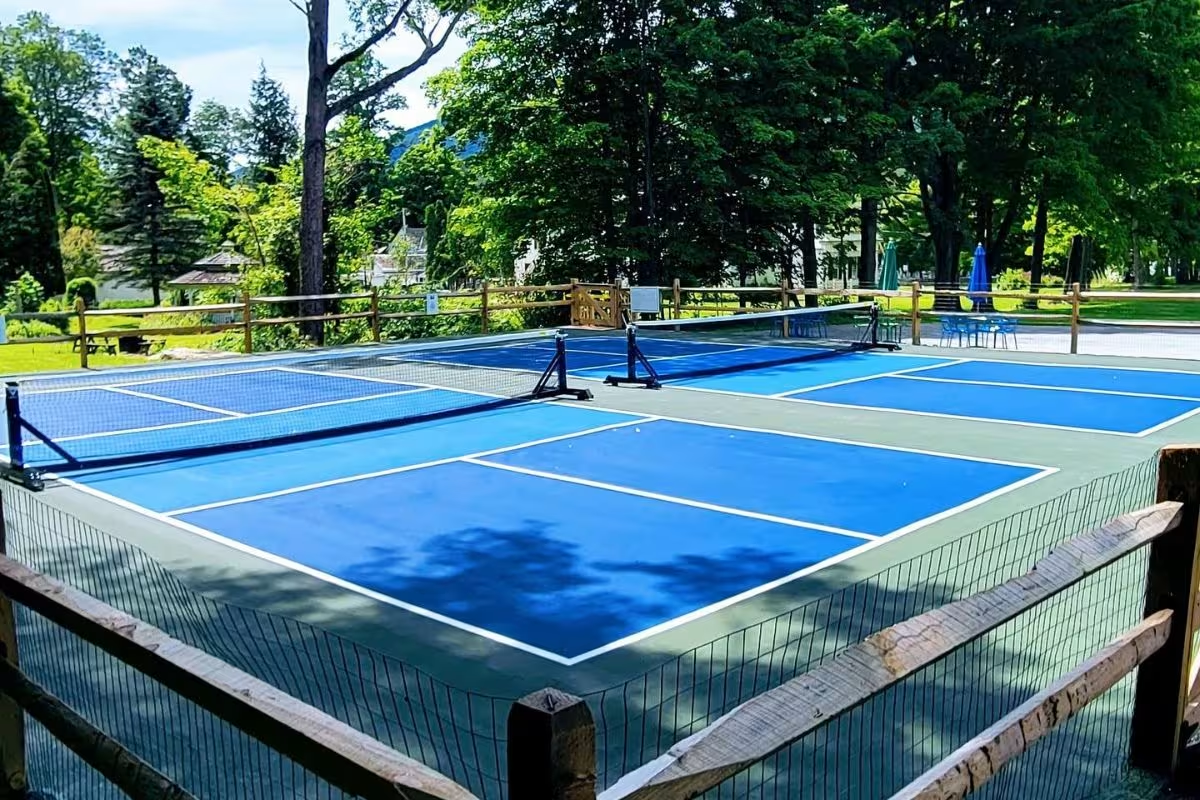Ultimate Guide to Professional Dinking in Pickleball: For many pickleball players, popping up dinks remains a persistent problem, often leading to missed opportunities and easy points for opponents. However, with the right technique, players can keep their dinks low and maintain control during rallies. A recent instructional video offers three essential tips to prevent pop-ups and improve performance at the net. These insights emphasize consistent body mechanics, proper foot placement, and a specific visualization technique to help players push through each shot.
Push Through the Paddle: Visualizing Two Balls
The first pickleball tip focuses on the concept of pushing through two balls on the paddle to keep the dink low. When making contact, players should imagine that they are pushing through two stacked balls rather than flicking at the ball with their wrist.
This visualization helps reinforce the idea of driving through the shot, rather than letting the wrist take over, which can result in higher, weaker dinks that are easy for the opponent to attack. This approach encourages a controlled stroke, keeping the paddle face steady and angled correctly for a low trajectory.
Many players struggle with using their wrist excessively during dinks, leading to inconsistent shots that pop up more frequently. By focusing on the visualization of pushing through two balls, players can train themselves to adopt a firmer stroke, making it easier to control the ball’s height and spin. The pickleball tip serves as a fundamental adjustment for players seeking more consistency in their dinking strategy.
Maintaining a Stable Position Throughout the Shot
Another key to avoiding popped-up dinks is maintaining a stable body position for the entire shot. Players are advised to stay at the same height as they execute the dink, only rising after the ball has been hit.
Many beginners tend to hit and rise simultaneously, causing the paddle to lift unintentionally and send the ball higher than intended. By keeping the body down and stable during the dink, players ensure that their paddle remains in the optimal position to direct the ball over the net at a low angle.
Staying down for the entirety of the shot helps players maintain balance and control. This tip addresses a common mistake where players lift their bodies too early, accidentally changing the paddle angle. Practicing this pickleball technique can aid in establishing a more consistent stroke and reduce the number of unforced errors resulting from poor body mechanics.
Proper Foot Placement: Positioning the Lead Leg Behind the Ball
The final pickleball tip emphasizes the importance of footwork and positioning when dinking. Players should aim to get their lead leg as close behind the ball as possible to stabilize their shot and provide a strong foundation.
Too often, players allow their feet to stay stationary, or “cemented,” and reach or lunge for the ball instead of adjusting their position. This can lead to off-balance shots, making it difficult to maintain a controlled dink.
Proper foot placement enables players to step into the shot with better balance, giving them more control over the ball’s direction and height. The emphasis on positioning behind the ball aligns the body and paddle in a way that promotes accurate, low dinks, especially during longer rallies where quick adjustments are necessary.
Combining Techniques for Consistent Improvement
Together, these three pickleball tips offer a comprehensive approach to refining dink shots and preventing pop-ups. Players who focus on visualizing the push-through, maintaining a stable height, and positioning their lead foot correctly can expect to see improvements in their consistency and control.
Each pickleball technique targets a different aspect of the dinking process, from stroke mechanics to footwork, allowing players to integrate them into their practice routines for well-rounded development.
For competitive players, mastering the dink is a critical skill that can turn rallies in their favor. As the popularity of pickleball continues to grow, having a solid understanding of how to execute dinks effectively becomes even more crucial for success. By following these pickleball tips, players can elevate their game and reduce the frequency of costly unforced errors at the net.
News in Brief: Ultimate Guide to Professional Dinking in Pickleball
Many pickleball players struggle with popping up dinks, which can lead to missed opportunities. A recent instructional video provides three key tips to prevent this issue. First, players should visualize pushing through two stacked balls on the paddle to keep dinks low, avoiding excessive wrist movement.
Second, maintaining a stable body position throughout the shot is crucial to control height. Lastly, proper foot placement, with the lead leg positioned behind the ball, enhances balance and shot stability. By combining these techniques, players can improve their consistency and control, essential skills for success in competitive pickleball.
ALSO READ: Is Carolina Pickleball Club Ready at MLP Las Vegas for a Major Roster Overhaul?


